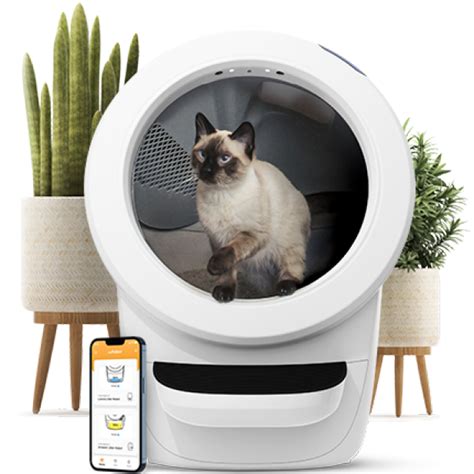Introduction
As the world embraces technological advancements, the pet care industry has not been left behind. The introduction of robot litter boxes has revolutionized the way pet owners manage their cats’ litter needs, offering convenience, automation, and time-saving benefits.

Market Overview
1. Growing Pet Ownership:
The number of pet owners worldwide has been steadily increasing, with over 600 million pet cats globally in 2023. This surge in pet ownership has fueled the demand for innovative pet care solutions, including robot litter boxes.
2. Rising Disposable Income:
In many developed countries, disposable income has been on the rise, leading to increased spending on pet care products and services. Pet owners are willing to invest in products that enhance their pets’ well-being and simplify their own lives.
Technological Advancements
1. Artificial Intelligence (AI) and Sensors:
AI-powered robot litter boxes use sensors to detect when a cat has used the litter, automatically scooping and disposing of waste. They also monitor litter levels and notify owners when it’s time to refill.
2. Self-Cleaning Mechanisms:
These litter boxes use various technologies, such as rakes, conveyor belts, or rotating drums, to remove waste from the litter box and dispose of it in a sealed container.
Benefits of Robot Litter Boxes
1. Convenience:
Robot litter boxes eliminate the need for manual scooping and cleaning, saving pet owners time and effort. They provide a clean and hygienic litter environment for cats.
2. Odor Control:
By automatically removing waste, robot litter boxes help control unpleasant odors in the home. Some models feature built-in air filters to further reduce odors.
3. Health Monitoring:
AI-powered litter boxes can track and analyze a cat’s litter habits. This information can be valuable for monitoring health changes, such as urinary tract infections or constipation.
Market Competition
1. Manual Litter Boxes VS Robot Litter Boxes:
While manual litter boxes remain popular due to their low cost and simplicity, robot litter boxes are gaining market share due to their convenience and advanced features.
2. Different Brands and Models:
Numerous brands offer robot litter boxes with varying features and price points. Some brands focus on affordability, while others prioritize advanced technology and functionality.
Market Projections
1. Future Growth:
The global robot litter box market is projected to reach $2.5 billion by 2025, growing at a compound annual growth rate (CAGR) of 12.5% from 2023 to 2025.
2. Key Drivers:
Rising disposable income, technological advancements, and growing pet ownership are expected to continue driving market growth in the coming years.
Case Study
Petcube Smart Litter:
Petcube Smart Litter is a popular robot litter box that uses AI to monitor a cat’s litter habits and alert owners of potential health issues. In a recent study conducted by the University of California, Davis, the Petcube Smart Litter was found to be 87% accurate in detecting urinary tract infections in cats.
Future Applications
1. Disease Detection:
As robot litter boxes become more sophisticated, they may be able to detect other diseases and health conditions in cats, such as diabetes or kidney disease.
2. Personalized Cat Care:
By collecting data on a cat’s litter habits, robot litter boxes could provide personalized recommendations for food, supplements, and veterinary care.
Conclusion
The robot litter box industry is rapidly evolving, offering pet owners convenient and innovative solutions for managing their cats’ litter needs. As technology continues to advance, robot litter boxes are expected to become even more sophisticated, offering additional benefits for pet owners and their feline companions.





















